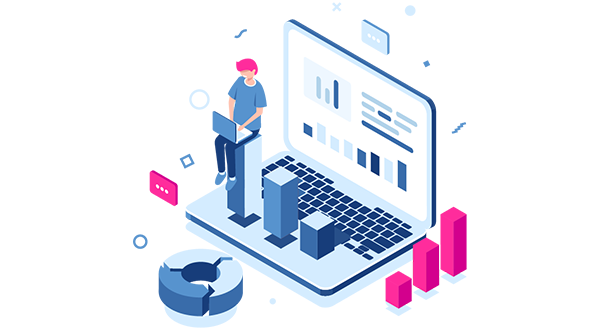

mLogica Thought Leaders: How Big is Too Big? Is Your Data Getting Away From You?

Anthony Veltri, mLogica SVP, Head of Analytics.AI
Big data analytics has become a key solution for companies looking to derive valuable insights from the varied and growing information stored across their organization. But with this vast influx of data come technical challenges as well as a variety of opportunities. What are the practical applications, technological advancements and most efficient management strategies presented by advanced big data analytics?
The Role of Big Data Analytics Across the Business Landscape
Every minute, massive amounts of information are gathered and ingested in an organization’s systems from various sources, including core operational environments, social media, internet of things (IoT) devices, online transactions and more. By strategically leveraging this data, organizations can identify the details of business processes to improve customer relationships and productivity, accelerate service delivery and drive revenue.
Big data analytics requires capturing, processing, storing and analyzing these large, disparate data sets and transforming them into meaningful information to support timely, tactical decision-making. It enables an organization to improve business functions, optimize costs and personalize customer experiences to drive efficiency and growth. By optimizing the information-gathering process, they can accurately assess data that affects their business today and project and model future opportunities and risks.
Virtually Unlimited Storage and Management Options
Once aggregated, business data needs to be securely stored and managed. The diversity and size of these data sets often exceed the capacity of traditional database environments. Since cloud platforms offer unlimited scalability, cloud migration—or, for organizations that must retain part or all of their on-premise estate, a hybrid cloud solution—allow companies to fully leverage their growing data to gain insights into all factors affecting their business.
Fast Processing and Analysis
Storing information is one thing; being able to leverage it promptly and effectively to respond to changing business dynamics is another. With ultra-high-speed ingestion, scalable processing, analysis at scale and flexible delivery methods, mLogica’s CAP*M Complex Events Analytics (CEA) platform can process huge data sets in near-real-time, allowing decision makers to get business-critical information and analysis fast.
Data Visualization to Drive Strategic Decision-Making
Using advanced visualization technologies, raw data is transformed into digestible, user-friendly outputs in near-real-time, making it easy to draw clear insights quickly from complex, high-volume information.
Big Data Challenges, Opportunities and Future Scope
Challenges
Increasing Volume and Velocity: Organizations take in massive amounts of data daily, which can overwhelm legacy systems and slow the storage and processing of critical business information. Since businesses also simultaneously produce huge data sets every day, they must scale their technology to support real-time processing or diminish the value of this time-sensitive information.
Diversity of Data Formats: Data today comes in an infinite array, from structured tabular files like web forms, spreadsheets and databases to unstructured formats like text files, videos, connected device feedback, social media and more. Legacy systems’ inability to process such diverse formats frequently hampers effective data integration and analysis.
Opportunities
Effective Decision-Making: Big data analytics gives enterprises a 360-degree view of their business including customer behavior, operational activities and industry trends, empowering them to make strategic adjustments to align with changing needs.
Predictive Analytics: By applying predictive analytics, companies can foresee business demand, forecast trends and fill existing gaps to future-proof their business.
Enhanced Efficiency: With the granular insights into business operations that advanced analytics provides, organizations can drive greater operational efficiency through process automation and resource optimization.
Specialized Data Analytics Applications
While the applications for big data platforms and advanced analytics are obvious in sectors such as retail, e-commerce, financial services and more—even seemingly less numbers-driven sectors have vital use cases for such technologies. Examples include:
HEALTHCARE
Big data analytics plays a key role in the optimization of healthcare practices, since it offers technologies like machine learning (ML) and artificial intelligence (AI) that can process enormous datasets and train complex AI models. AI and ML can then identify patterns to help predict future health trends, leading to more accurate forecasting and resource planning.
Advanced analytics also facilitates real-time patient monitoring. Wearable connected devices that monitor an array of patient vital signs can help healthcare practitioners quickly detect health changes, particularly when they can incorporate medical history and genetic data. AI systems also support personalized and preventative medical care by analyzing an individual’s medical history in the context of relevant global data.
PRECISION AGRICULTURE
Big data analytics has also transformed the agriculture industry. Using information from crop quality and soil sensors, weather forecasts and satellite imagery, farmers can make timely decisions about fertilization, irrigation and pest control, resulting in more sustainable farming, higher-quality crops, increased production and reduced waste.
Getting the Most Out of Big Data Analytics
mLogica’s CAP*M CEA big data solution lets organizations from telecom to finance, healthcare and more enhance the value of their data by quickly processing high volumes of information to provide a holistic picture of all business functions, including:
Integrating External Data Sources
Organizations can use real-time data streaming across an array of external sources, including online transactions, social media and IoT devices to integrate external information that drives value for their business.
Advanced Analytics
Using AI- and ML-driven advanced analytics allows companies to fully leverage previously under-utilized unstructured data, letting them identify patterns, anomalies and exceptions and project potential outcomes based on this critical external feedback.
Mobile Reporting
Mobile reporting technology can extract insights from huge, diverse data sets, then generate personalized business intelligence reports and deliver them to stakeholders through mobile apps, allowing fast, informed decision-making.
Data Governance
Data governance is the set of processes and policies that regulate and protect enterprise data. Advanced analytics facilitates these protocols by tracking and reporting on the consumption, compliance and quality of organizational data throughout its lifecycle, information that’s critical for decision-makers to identify potential gaps in existing policies. This allows the business to minimize risk and ensure compliance with organizational and regulatory requirements.
Becoming Future-Ready in the Era of Increasing Data
Invest in AI-based big data analytics: To gain a lasting competitive advantage, it’s essential for companies to prioritize leveling up their tools and training and the development of a “data first!” company orientation, including incorporation of advanced AI and ML capabilities.
Break Data Silos: Data silos are the bane of companies desperate to get an integrated view of all their business functions. Big data analytics lets organizations break these silos via a unified platform that allows stakeholders to immediately see all business data across the organization.
Build a Data Mesh: A data mesh creates a secure, decentralized environment to store, manage and consume organizational data products in a variety of user-friendly formats, facilitating collaboration across teams. This also gives individual teams the ability to independently analyze data to enhance their respective business processes.
Conclusion
The sources—and output—of vital business data are growing exponentially. As this volume of information from all sources grows, so does the need for systems that can intake, process, store and leverage that data to drive profitable decision-making.
Unfortunately, most established organizations rely on legacy distributed and mainframe systems that are incapable of managing this data, ultimately causing them to lose out to better-equipped competitors. However, implementing big data analytics requires not only the right platform and applications, but an expert team that can assess the organization’s existing and future needs to create a customized solution and deploy it seamlessly.
mLogica’s CAP*M CEA, a leading-edge platform architected to support the building of high-volume, high-performance scalable data applications, allows each organization to create the best analytics solution for their needs—implemented and supported by teams of experts in both legacy and modern technologies.








































